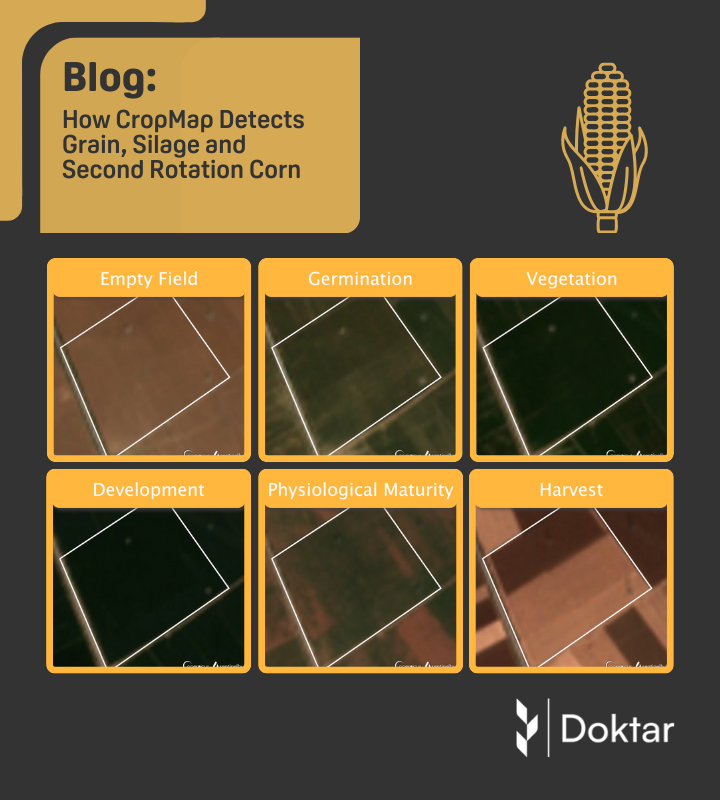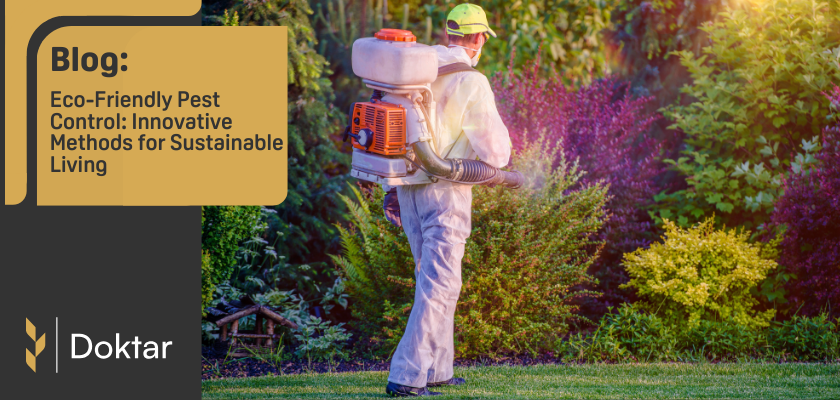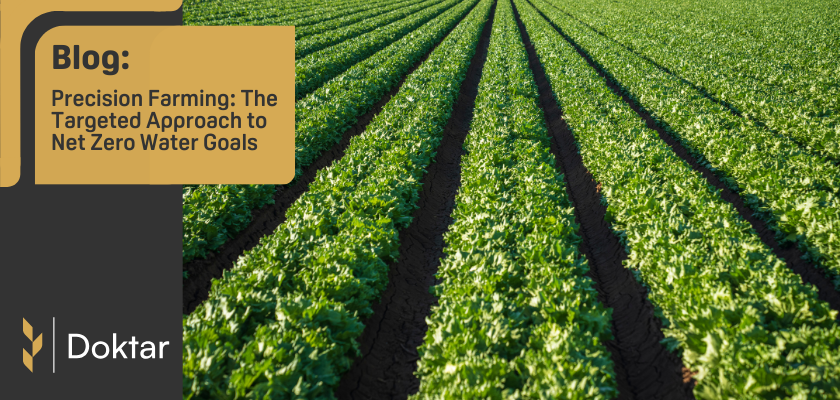

How CropMap Detects Grain, Silage and Second-Corn
CropMap is a data analysis and management application that relies on a harvest tracking algorithm and is utilized in agricultural fields. Detection algorithms are employed to differentiate between grain and silage corn, as well as to monitor the stages of crop growth and harvest. The CropMap application plays a significant role in optimizing agricultural processes and assisting farmers in making data-based decisions.
Published on 19 April 2024
What is Grain Corn?
Grain corn is a type of corn typically grown for human consumption or industrial use. This variety of corn contains a kernel, often called grain, which is ground to produce flour or starch. Grain corn is commonly used for various industrial purposes, including human nutrition, starch, and corn syrup production.
What is Silage Corn?
Silage corn is a variety of corn usually used as animal feed. This type of corn is harvested while the plant is still young and juicy and then fermented into silage. The fermentation process preserves the corn's nutritional value and makes it more digestible for animals. Silage corn is commonly used to feed cattle, sheep, and other large animals in winter.
What is First-Crop Corn?
First-crop corn is typically sown and harvested once a year. It is usually planted in spring or early summer and harvested in the fall. First-crop corn often includes varieties grown for grain or other commercial purposes.
What is Second-Crop Corn?
Second-crop corn represents the second harvest within a year. It is generally sown at the end of summer or the beginning of autumn and remains in the field throughout the winter. This type of corn usually benefits from a second growing season following the harvest before planting. Second-crop corn tends to have a shorter growth period and yields less than the first crop.
First-Crop Corn – Second-Crop Corn Detection
The CropMap application uses optical and radar temporal satellite imagery and field data such as average planting-harvest dates from the targeted region. This data plays a key role in creating algorithms used in machine learning to detect corn varieties. The steps followed to predict whether the detected corn fields are the first or second crop are as follows:
- Cloud-free images are used throughout the season to calculate spectral index averages (NDVI, BSI).
- Based on these spectral index averages and determined threshold values, field activity is monitored before the estimated corn planting date (Crop planted/crop not planted).
- Based on NDVI and BSI values, if a crop is detected in the field during the date range before the planting date, it is marked as second-crop corn. If there is no activity, it is marked as first-crop corn.
Grain-Silage Corn Detection
Algorithms determine whether the fields labeled first or second-crop corn are grain or silage. The decision to mark the products as grain or silage depends on factors such as the corn's duration in the field, the greening duration, whether it is left or harvested, and the phenological stage at which the corn is harvested. NDVI index is used to identify these factors, and pixel values during different phenological stages of the field product are modeled. If the product's duration in the field is short, harvested immediately after grain formation is complete and before entering the drying stage, it is labeled silage. If the product's duration in the field is long, waiting for the husks to dry and the kernels to harden before harvest, it is labeled grain.
This labeling is done specifically for first and second-crop corn, resulting in four distinct classes: first-crop grain, first-crop silage, second-crop grain, and second-crop silage.
Harvest Tracking Algorithm
CropMap is a data analysis and management application based on a harvest tracking algorithm used in agricultural areas. The algorithm plays a significant role in optimizing growing, maintaining, and harvesting agricultural products. The goal is to analyze agricultural data to provide information and assist farmers in making decisions. The tracking steps vary depending on the planted crop, specifically for corn-labeled fields:
- NDVI and BSI values of corn field samples collected from the targeted region in past years are calculated for the entire season. This allows for matching the spectral index values during the greening, drying, and harvesting periods of the corn fields in that region and determining threshold values.
- During the season to be tracked, the determined threshold values are used, and the crop is marked as harvested based on changes in NDVI and BSI values on the harvest date.
- Since the corn plant has very low NDVI values during the drying stage, the algorithm can detect early harvest. However, to prevent false alarms, radar imagery is used.
- Changes in elevation in fields or other areas, especially flattening that occurs when vegetation is harvested, can be detected.
- Threshold values for phenological stages like greening and drying of the crop are also determined, providing an estimated harvest time before the crop is actually harvested.
- Spectral index values can provide a one-week or two-week harvest forecast based on the difference from the harvest threshold value.
- Fields with spectral index values far from the harvest threshold value are tagged as not to be harvested soon.
At Doktar, we dedicate ourselves to leading advancements in agricultural technology and ensuring that our products remain at the forefront of innovation. To explore our company's efforts and successes further, connect with us on Instagram and LinkedIn. For information about our products and services and to discuss solutions tailored to your business, please fill out the contact form. Thank you for joining us on this journey towards a more sustainable and productive agricultural future.

Eco-Friendly Pest Control: Innovative Methods for Sustainable Living
Discover eco-friendly pest control methods that promote sustainable living. Explore natural techniques like biological control, botanical insecticides, and companion planting. Learn about technological innovations such as IoT-based pest monitoring and drone technology. Overcome challenges and embrace future prospects with Doktar’s innovative solutions, ensuring effective and environmentally friendly pest management.

How Ecological Pest Management Can Revolutionize Agriculture?
Ecological pest management (EPM) integrates sustainable practices to manage pests, promote biodiversity and reduce chemical use. Tools like Doktar's PestTrap and IoTrack enhance precision and efficiency, lowering costs and environmental impact. EPM is essential for sustainable agriculture, protecting crops, human health, and the environment for future generations.

Precision Farming: The Targeted Approach to Net Zero Water Goals
Precision farming uses GPS, sensors, drones, and data analytics to optimize agriculture by providing real-time insights. Doktar enhances this through IoT devices like the Filiz sensor station and Orbit field scouting app, enabling precise resource use and sustainability, aiding farmers in achieving net zero water goals. These innovations lead to improved productivity and environmental benefits.
